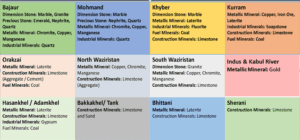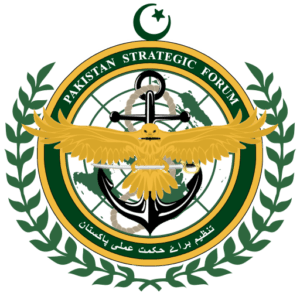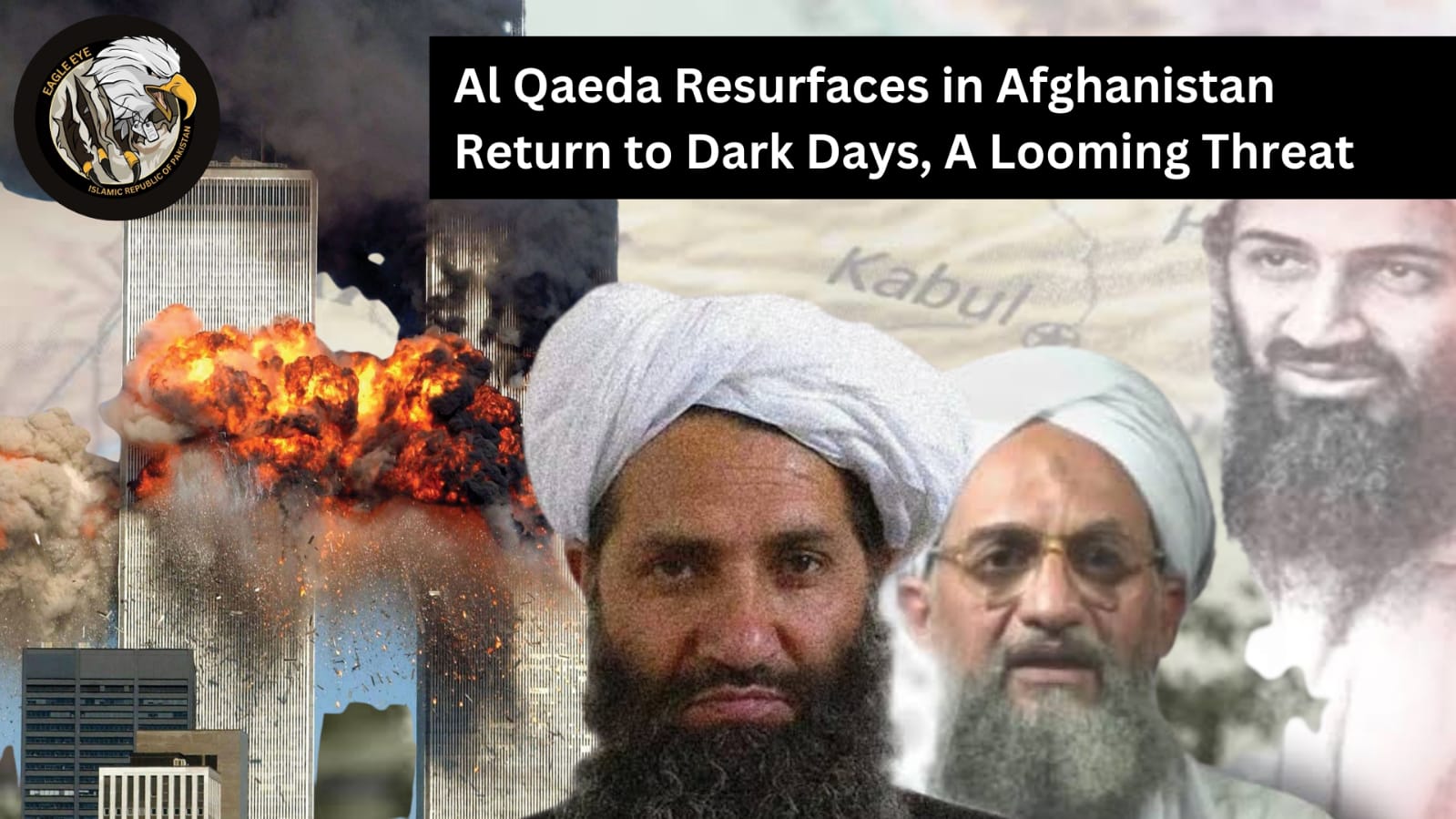Note: In this article the author has presented an alternative perspective of KPK security in terms of tourism, mining, minerals, hydrocarbons, hydel power generation & trade.
Please note that this is part-1 of the article
A month after the suicide blast in Police Lines Mosque in Peshawar, there is a growing sense of despair and anguish among people of Pakistan, especially KP. There is a visible surge in the number of terrorism related activities after TTP denounced ceasefire around 4 months back. With the ingress of social media in every household, presence of vast amount of misinformation online and the political unrest in country, it is only logical that this sense of hopelessness prevails. However, there are countless reasons why we should not lose hope!
Having served in KP since 2009 as a Brigade Commander, then as a Division Commander, currently serving as Corps Commander and dealing with Western Border since then, I have seen the security and development in KP over these years very closely. Having seen character of war and security policies changed for KP especially erstwhile FATA over the years, we can gladly proclaim that we have come a long way. Army will keep doing its job for the security and development of KP and we will prevail (Allah Willing), but there is a need to understand that the security mosaic of KP is more complex and there are other facets to it apart from military operations and domination. It is linked to the socio-economic development of KP with a focus on Newly Merged Districts (let’s call them Districts).
Barry Gordon Buzan, a British political scientist, presented a concept of security which extends beyond military security. He claims that the concept of security encompasses other dimensions such as economic, political, societal and environmental security. It involves not only the protection of territorial integrity of a state but sustaining and enhancing the well-being of the people coming within jurisdiction. Robert McNamara, former US Secretary of Defense said that “development means security and without security, there is no development”.
It is not a precedence for Army Officers to write! But in my opinion, why not! Compared to the past, today we stand at crossroads of KP’s future. This may be inter related to security but no one will be allowed to take over a district, point in case TTP re-emergence in Swat. At policy level, we must think beyond security to find solutions.
The development of KP lies in gaining maximum benefit from potential in three things i.e. Minerals & Mining (including Hydrocarbons), Tourism and Trade. These three things can not only unearth the security and development in KP but also provide financial solution for the ailing economy of Pakistanin times to come. Gist of these aspects to development and security in KP is covered in this article and eachwill be covered in detail subsequently in few articles:
- Minerals & Mining
Pakistan has the world’s second largest salt mines, fifth largest copper and gold reserves and second largest coal deposits, as well as estimated billions of barrels of crude oil. Despite having this huge potential, contribution of mineral sector to Pakistan’s GDP is around 3% and country’s exports are only about 0.1% of the world’s total. In the year 2017, Pakistan’s total mineral exports were 0.5 Billion USD as compared to the world’s 401 Billion USD. KPhason its inventory several varieties of Gems, Metallic Minerals, Rare Earth Minerals, Marble / Dimension Stone (50 types) and Industrial Minerals. The spread is almost all over KP landmass, especially in Northern areas and NMDs.
Total mineral’s worth of KP is estimated to be around Rs 200 trillion. Dimension stones reserves are estimated to be around 3 Billion tons, amounting to approximately 78% of the total estimated national reserves, whereas Gems, Metallic Minerals, Industrial Minerals are estimated to be around 10 Billion tons in NMDs alone, amounting to be 20% of the estimated national reserves.

KP mineral development policies and regulations put in place in year 2017 have started to pay dividends and present production of minerals in KP is around 40.2 Mn Tons per year. The revenues have increased from approximately Rs 2.1 Billion in year 2018-19 to Rs 8.2 Billion in year 2021-22 with 61% increase in a short period of 3 years. However, in complete province, very few Joint Ventures are undertaken – including FWO’s signature Muhammad Khel Copper Mining Projectin Boya North Waziristan District. As per mining experts, this area can be developed into a “Copper City”.Mining value chain explains that mining duration from small scale to large scale can be anything from 3 to 9 years. Hence in times to come small-scale mining activities will form the major share of mining?
In KP, huge amount of minerals are extracted in raw form and exported as such. The province has at present no ability to carry out value addition or produce a finished product. It is unfortunate that up till now, even after 75 years of independence, no worthwhile mineral-based industry could be established in the country except marble and ceramic. Not a single reputable gold or jewelry related manufacturing / refinery setup exists in Pakistan. The mineral potential of KP especially NMDs, if taped properly, can address its own and Pakistan’s financial woes.
- Potential of Hydrocarbons
The overall requirement for oil in Pakistan is approximately450,000 Barrels per Day (BPD). KP has been blessed with large amount of oil and gas reserves that if utilized effectively can provide much relief to the oil and gas imports of our country. Oil and Gas production is currently taking place on a very limited scale and there are 42 producing wells in Naspa, Tal, Chanda and Mela Oil blocks in Kohat, Hangu and Karak Districts. Current production of Pakistan is 88,262 BPD whereas share of KP alone is 35,000 BPD (40% share of total production). It has provided jobs to around 20,000 employees directly or indirectly.
Exploration is currently paying dividends in Miranshah, Bannu West, Wali, Shewa, Lakki Marwat and some blocks in Orakzai and Tirah and high impact oil and gas discoveries are expected in KP (80% of which lie in NMDs and adjoining belt). It is expected that 500 Million barrels oil and 9 Trillion cubic feet gas in total can be produced from KP which is almost 6 times the potential of Sui (Total potential of Sui is 1.6 Trillion cubic feet).
- Tourism
There is no denying the fact that Pakistan is a beautiful country with countless prospects for tourism. KP is a beautiful land with beautiful people and the world needs to see it. KP has a diverse geo-ecological formation, ranging from Dera Ismail Khan at 250 mabove mean sea level in South to 7,708 m high Tirich Mir in the Chitral District. Around 20.25% of the province is forested with trees of varying density. Alpine pasture constitutes almost one third (28.98%) of the forest ecosystem, almost same quantum of land (30.08%) is under agriculture. Another 10.67% constitutes the rangelands.
Apart from Galiyat and Chitral, there is no dearth of scenic landscapes in Swat, Orakzai, Kurram, Tirah, Dir and Bajaur.
In recent years, largely due to increased security and improved accessibility, the tourism sector in KP has experienced substantial growth, around 1.2 Million domestic tourists and thousands of international tourists visiting the area annually and generated over $120 Million in direct revenue.The tourist influx in KP for the year 2021/22 was approximately 52 Million and on Eid-ul-Fitr last year alone, tourists spent around Rupees 56 Billion. KP can become the hub of national and international tourism and the required steps are also in place towards the right direction which include the establishment of thestate-of-the-art Integrated Tourism Zones (ITZs), being planned inGanool in Mansehra District and Gabbin Jabba and Mankiyal in Swat District. KP Tourism Authority believes that these ITZs will add 10 Billion USD to national economy. In future, ITZs are also planned in Kurram and Orakzai.
More on tourism will be covered later but enchanted forests of Dir and Rajgal in Khyber, Nanavar Caves, Samana Fort and Sama in Orakzai, lofty mountains and meadows of Kurram, Deep Canyons of Bannu, scenic views and water sports at Gomal Zam Dam, picturesque spots along snow covered mountains in Razmak and Shawal are few of the places, unknown to even locals, are some of the potential tourist destinations in KP.
- Trade
KP has been historically an important hub for trade between Pakistan and Afghanistan and beyond. It provides Central Asian Republics one of the closest routes to sea.However, much of the trade was based on illegal trade and smuggling paying no dividends for the national exchequer. However, with the regularization and proper functioning of the border terminals there is an increase in trade to and from KP.Furthermore, with significant improvements in infrastructure due to investments made through China Pakistan Economic Corridor (CPEC), the investment climate in the Province of Khyber Pakhtunkhwa isextremely promising.The industrial cooperation under CPEC provides Khyber Pakhtunkhwa a great opportunity to jump start the industrialization process. Rashakai Special Economic Zone (SEZ) is the only SEZ in CPEC portfolio that is being done in Build-Operate-Transfer mode with Chinese state owned initiative and is likely to bring more Joint Ventures in upcoming future.
In 2019-20, the total volume of imports was worth 339 Million USD and exports valued at 607 Million USD. In 2021-22, imports have increased to 600 Million USD and exports were worth 589 Million USD. Major exports include rice, cement fruits and vegetables whereas imports comprise mainly Coal, fresh and dry fruits. On average 1800 cargo trucks and 6750 pedestrians move through the main 4 border terminals in KP (Torkham, Angoor Adda, Ghulam Khan and Kharlachi). As and when capacity is built, we should not shy away from opening more routes.
I would be covering trade aspects in subsequent writing but trade in KP is not restricted to roads but also linkages of rail and pipelines to Central Asia and beyond.
- Hydel Power Generation
Almost half of the hydel power potential of our country lies in KP. Currently the national requirement for electricity is around 25,000 MW, whereas, KP is producing 10,858 MW electricity through 59 operating dams which include Tarbela, Warsak and Kurram Tangi Dam. There are 15 under construction dams that will generate a little over 7,500 MW electricity and there are another 22 dams planned in pipeline that have the potential to produce 11,100 MW electricity. Mohmand Dam is under construction and will provide 800 MW of electricity by 2026. Total hydel potential of KP is around 30,000 MW which is almost half of the total hydel power potential of Pakistan.
Notwithstanding the importance of bigger dams, opportunity exists for constructing small dams and hydro-power projects that can fulfill requirement of local population apart from creating job opportunities.
These articles cover an embryonic concept, which aims to provide advantage to people of our Newly Merged Districts amid the challenges that affect the development and security of KP. Albeit the fiscal constraints due to the current state of our economy, governance issues coupled with the present political scenario, the answer to the voices of local people lies in development in these sectors through Joint Ventures and Public-Private Partnerships. This will not only provide access to locals in Newly Merged Districts, but also create their stakes and onus.
Time is very short and critical and we need to take immediate steps at policy level to build on the potential of KP. The security of KP is not all about guns and we must actualize this concept in the form of doable concrete actions where the development overtakes the security. In subsequent write ups more to come.
Author: Lt Gen Hassan Azhar Hayat, Commander 11 Corps
#TeamPakistanStrategicForum






